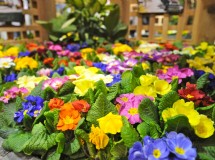- Fragrance oil is often equated with essential oil, but this is not entirely accurate. While fragrance oil may contain essential oil, the reverse is never true. Essential oil is a pure extract from a single, natural fragrance source, such as sandalwood, by a process of distillation. Fragrance oil, on the other hand, is a combination containing either one or more essential oils, an infused oil, which is a vegetable oil combined with an aromatic plant by mixing and heating, or both.
- A very common use for fragrance oils is for scent applied to the skin. Although this entire family of scents is often referred to as perfume, there are actually three classes of scent. Perfume, toilet water and cologne are all mixtures of aromatic chemicals and essential oils. Actual perfume usually has an alcohol base and up to 30 percent concentration of fragrance oils. Until the 19th century, all perfumes were a composition of natural oils; however, natural perfumes are very rare today. Modern perfumes may contain up to 300 different natural and synthetic elements. Toilet water contains between 4 and 8 percent concentration of fragrance oils in an alcohol or distilled water base. Cologne is an even more diluted form of fragrance. Cologne contains between 2 and 5 percent fragrance oils and is often used over the entire body after a bath or shower.
- Nearly all perfume is formulated along the formula of a head note, middle note and base note, which use different fragrance oils. This concept was developed from the idea that perfume has several layers of fragrance that are stripped away by the evaporation process. The top note is the scent that is prominent when the perfume is first applied to the skin. A fruit scent such as lemon oil is an example of a head fragrance note. The middle notes are derived from fragrance sources, which are slower to evaporate. Examples of middle notes are chamomile and ylang-ylang fragrance oils. The base note is comprised of fragrance oils that are slowest to evaporate when applied to the skin. Patchouli and rose are common base notes.
- Fragrance oil is also used in substances that should not be applied to the skin, such as incense. Many fragrance oils, such as spice, conifer and citrus oils can be irritating to skin when applied in undiluted form. Fragrance oils should never be applied in the eyes or ears. Additionally, pregnant women should avoid sage and fennel, which contain active ingredients that mimic hormonal processes. Fragrance oils should be kept out of the reach of children. If a child swallows a fragrance oil, give the child milk, cream or any other soluble liquid to dilute the oil and then seek emergency medical attention from the local poison control center. People who wear contact lenses or who have high cholesterol or epilepsy should use fragrance oils with care. It is not advisable to mix blends of fragrance oils, although mixing single oils is fine.
. - If stored properly, fragrance oils should retain their potency for years. Essential oils should be stored in amber or dark-colored bottles in cool or cold environments away from direct sunlight. Other fragrance oils need not be stored in amber bottles but should be stored away from direct sunlight in cool or cold conditions. Especially expensive or precious oils should be stored in refrigerated conditions. Some essential oils change color or aroma when stored. This is natural and not a sign that the oil has gone bad.
What is Fragrance Oil?
Perfume, Toilet Water and Cologne
Head, Middle and Base Notes
Using Fragrance Oils Safely
Storing Fragrance Oils
SHARE










































